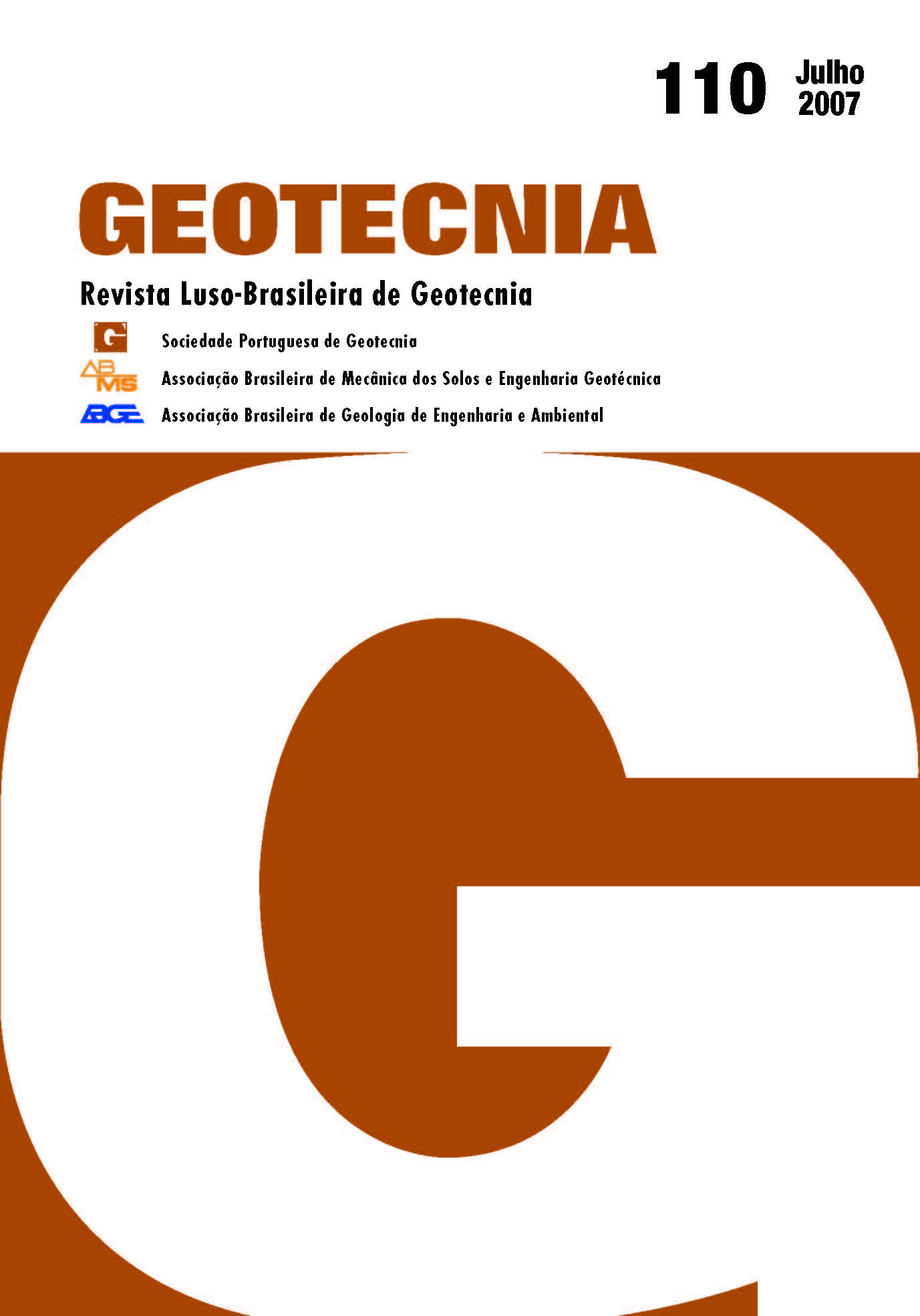Encapsulamento de um solo contaminado por óleo diesel
DOI:
https://doi.org/10.14195/2184-8394_110_2Palavras-chave:
Solos Contaminados, Encapsulamento, Óleo DieselResumo
Ensaios de lixiviação em coluna, condutividade hidráulica em permeâmetro de parede flexível, en - saios de compressão não-confinada e fotomicrografia foram realizados com o objetivo de avaliar a efi ciên cia da remediação de um solo residual do arenito Botucatu (SRAB) contaminado por hidrocarbonetos através do método de solidificação/estabilização, por meio da adição do cimento de Portland. Como resultado do pro gra ma de ensaios, o método foi considerado eficiente apenas para quantidades pequenas do óleo no solo con ta minado.
Downloads
Referências
ABNT NBR 6502 (1995) Solos e Rochas – Terminologia. Associação Brasileira de Normas Téc ni - cas NBR 6502. Rio de Janeiro.
ABNT NBR 12025 (1990) Solo-Cimento – Ensaio de Compressão Simples de Corpos-de-Prova Cilíndricos. Associação Brasileira de Normas Técnicas NBR 12025. Rio de Janeiro.
ABNT NBR 12770 (1992) Solo coesivo – Determinação da resistência à compressão não confi na - da. Associação Brasileira de Normas Técnicas NBR 12770. Rio de Janeiro.
APHA (1995). Standard Methods for the Examination of Water and Wastewater. American Public Health Association. 19th ed. Baltimore.
ASTM D 4874 (1995) Standard Test Method for Leaching Solid Material in a Column Apparatus. American Society for Testing and Materials D 4874. Philadelphia.
ASTM D 5084 (1990) Standard test method for measurement of hydraulic conductivity of saturated porous materials using a flexible wall permeameter. American Society for Testing and Materials D 5084. Philadelphia.
Azambuja, R. M. B. (2004) Comportamento Mecânico e Hidráulico de Misturas de Solo-Cimento Bentonita para a Aplicação em Barreiras Verticais de Contenção de Contami nan tes. Dissertação (Mestrado em Engenharia) – PPGEC/UFRGS, Porto Alegre.
Baird, C. (2002) Química Ambiental. Bookman Ed., 2a Edição, Rio de Janeiro.
Caberlon, R.C. (2004) Condutividade Hidráulica em Solos Contaminados Encapsulados. Dissertação (Mestrado em Engenharia) – PPGEC/UFRGS, Porto Alegre.
Knop, A. (2003) Encapsulamento de Solos Contaminados por Hidrocarbonetos. Dissertação (Mestrado em Engenharia) – PPGEC/UFRGS, Porto Alegre.
Mayers, T. E.; Eappi, M. E. (1992) Laboratory evaluation of stabilization/solidification technology for reducing the mobility of heavy metals in New Bedford Harbor superfund site sediments stabilization of hazardous radioactive and mixed wastes. 2nd edition. ASTM publication, Philadelphia.
Pollard, S. J. T.; Montgomery, D. M.; Sollars, C. J.; Perry, R. (1991) Organic compounds in the cement based stabilization/solidification of hazardous mixed wastes-Mechanistic and process considerations. Journal of Hazardous Materials, Amsterdam, vol. 18, p. 313-327.
Santos, A. B. (2005) Comportamento de liners sob a influência de um contaminante orgânico. Dissertação (Mestrado em Engenharia) – PPGEC/UFRGS, Porto Alegre.
Sawyer, C. (1994) Chemistry for Environmental Engineering. McGraw Hill International, 4th Edition.
Skempton, A. W. (1954) The pore pressure coefficients A and B. Géotechnique, London, vol. 4, p. 143-147.
USACE (1995) Tractability Studies for Solidification/ Stabilization of Contaminated Material. United States Corps of Engineers, Technical Letter N° 1110-1-158. Washington.
Wiles, C. C. (1987) A review of solidification/stabilization technology. Journal of Hazardous Materials, Amsterdam, vol. 14, p. 5-21.
Yong, R. N.; Rao, S. M. (1991) Mechanistic Evaluation of Mitigation of Petroleum hydrocarbon contamination by soil medium. Canadian Geotechnical Journal. vol. 28. p. 84-91.




